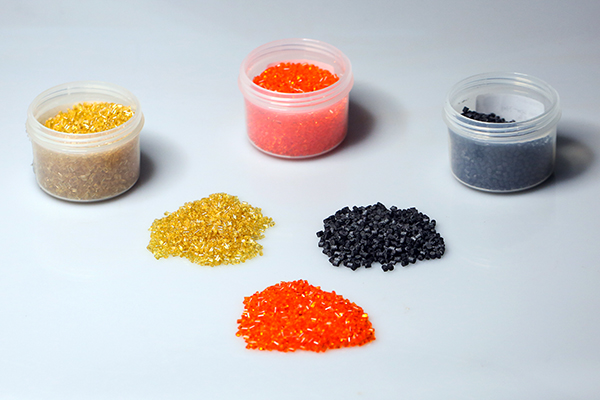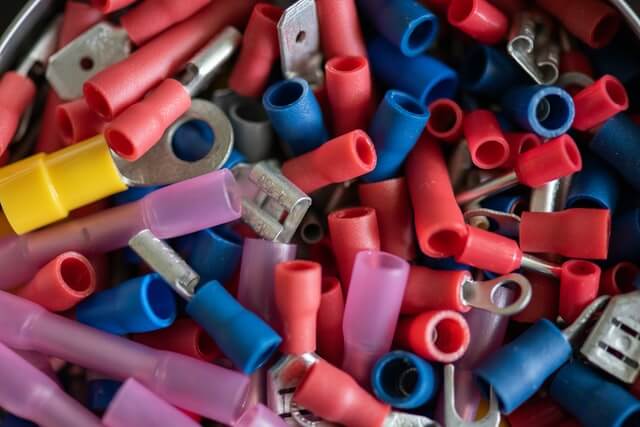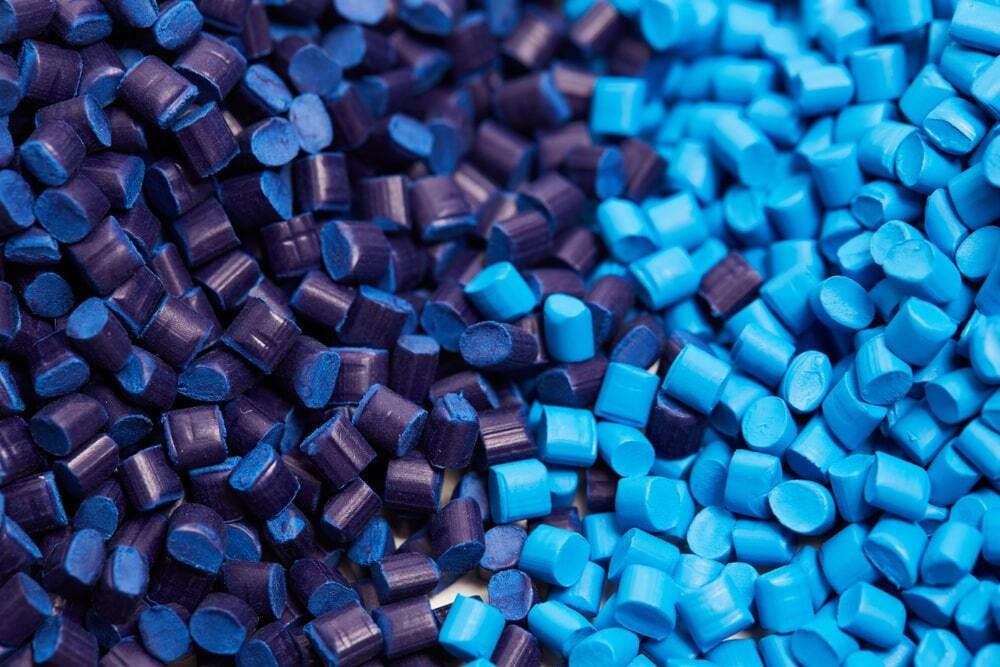What is the raw material for extrusion moulding:The primary raw materials for extrusion moulding are thermoplastics, including polyethylene, polypropylene, PVC, and polystyrene, among others.

Basics of Extrusion Moulding
Extrusion moulding is a popular manufacturing technique primarily employed for producing long and continuous profiles like pipes, tubes, and strips. It plays a crucial role in various industries due to its ability to shape materials into specific cross-sectional profiles.
Principles of the Process
At the core of extrusion moulding lies the principle of pushing or drawing material through a die. This die defines the shape and dimensions of the resulting product. The key steps include:
- Melting: The raw material, typically in pellet form, is heated until it melts or becomes malleable.
- Conveying: Rotating screws push the softened material towards the die.
- Shaping: The material passes through the die, adopting its shape.
- Cooling: Post extrusion, the product cools, and solidifies into its final shape.
Common Machinery and Equipment Used
In the realm of extrusion moulding, specific machinery ensures a smooth and efficient process. Some of the most common equipment includes:
- Extruders: These are the primary machines that perform the melting, conveying, and shaping of the material. Single-screw and twin-screw extruders are the two main types.
- Dies: These tools are responsible for giving shape to the material. They come in various designs, tailored to the desired product’s cross-sectional shape.
- Feeders: These machines supply the raw material, usually in the form of pellets or granules, to the extruder.
- Cooling Systems: Once the material has passed through the die, cooling systems (like water baths or air blowers) ensure rapid solidification.
- Cutting or Pulling Machines: After cooling, these machines cut or pull the extruded product to desired lengths.

Types of Raw Materials
The world of extrusion moulding uses a variety of raw materials, each offering unique properties that dictate their end-use applications. Understanding these materials and their inherent characteristics is paramount for both manufacturers and consumers.
Thermoplastics
Thermoplastics rank among the most commonly used raw materials in extrusion moulding. These materials soften upon heating and harden once cooled, a process that can be repeated multiple times without significant degradation. Their recyclability makes them an environmentally friendly option in many industries ,here is the raw material for extrusion moulding.
- Polyethylene (PE): One of the most versatile and widely used plastics, Polyethylene comes in various densities. Its applications range from making everyday items like bottles and bags to industrial materials.
- Polypropylene (PP): Renowned for its resistance to fatigue and its elasticity, Polypropylene often finds use in textiles, automotive components, and microwavable food containers due to its high melting point.
- Polyvinyl chloride (PVC): Distinguished by its durability and cost-effectiveness, PVC can be either rigid or flexible. It’s the material of choice for products like pipes, window frames, and vinyl flooring.
- Polystyrene (PS): Recognized for its excellent insulation properties, Polystyrene often takes the form of disposable cutlery, insulation boards, and CD cases.
Thermosetting plastics
Unlike thermoplastics, thermosetting plastics undergo a chemical change when heated, setting them into a permanent shape. This change is irreversible, meaning they won’t melt upon reheating. Typical applications include electrical insulations, laminates, and certain aerospace components.

Properties of Raw Materials
When considering extrusion moulding, understanding the properties of the raw materials is paramount. These properties not only influence how a material behaves during the extrusion process but also the quality and characteristics of the end product. Delving into these properties helps in optimizing the manufacturing process and ensuring the desired product specifications.
Molecular Structure and Its Impact
Molecular structure essentially defines how atoms and molecules arrange themselves in a material. This structure significantly impacts the material’s strength, flexibility, and overall performance. For example:
- Linear Polymers: These have a straight-chain molecular structure, often resulting in higher density and crystallinity. Polyethylene, for instance, can exhibit this structure, especially in its high-density variant (HDPE), making it sturdy and rigid.
- Branched Polymers: These have chains branching off from the main chain, often leading to lower density. Low-density polyethylene (LDPE) is a classic example, exhibiting more flexibility than HDPE.
- Cross-Linked Polymers: These polymers have connections between different polymer chains, resulting in a network structure. This characteristic often enhances the material’s strength and heat resistance.
Viscosity and Flow Characteristics
Viscosity essentially dictates how a material flows. In the context of extrusion moulding, a material’s viscosity can profoundly influence the ease of the process and the quality of the final product .
- High Viscosity: Materials with high viscosity are thicker and resist flow. While they can offer greater control during extrusion, they might require more energy to process.
- Low Viscosity: These materials flow more effortlessly, potentially leading to faster extrusion rates. However, they might pose challenges in maintaining the desired shape immediately after exiting the die.
It’s also worth noting that viscosity is temperature-dependent. Materials like Polypropylene can have their flow characteristics fine-tuned by adjusting the processing temperature.
Thermal Stability
Thermal stability refers to a material’s ability to retain its properties when exposed to heat. In extrusion moulding, where heat is an integral part of the process, this property is crucial.
- Thermally Stable Materials: These can endure the high temperatures of the extrusion process without degrading. Such materials are less likely to emit harmful substances or undergo unwanted chemical reactions during processing.
- Thermally Sensitive Materials: These require precise control of the extrusion temperature. They might degrade or discolor if exposed to temperatures beyond their stability range.
Preparation of Raw Materials for Extrusion
For a successful extrusion process, preparing raw materials adequately is just as important as the extrusion process itself. Properly prepared materials not only ensure a smooth extrusion but also contribute to the quality and durability of the end product. Let’s delve into the key steps involved in this preparation.
Drying and Dehumidifying
Moisture can be a significant adversary in the extrusion process. Excess moisture can lead to defects in the final product, reduce the material’s mechanical properties, and even cause bubbles or voids. Here’s a deeper look:
- Importance: Removing moisture helps prevent degradation of the polymer during the extrusion process. Moisture can react with polymers, leading to a breakdown of the molecular structure.
- Methods: Common methods include hot air dryers, desiccant dryers, and vacuum dryers. The choice often depends on the type of polymer and the degree of drying required.
- Materials Impacted: Hygroscopic materials, such as Nylon and Polyvinyl chloride (PVC), especially need this treatment as they tend to absorb moisture from the environment.
Blending and Mixing
Uniformity is paramount in extrusion. To achieve consistent material properties and color throughout the extruded product, thorough blending and mixing of the raw materials are essential.
- Importance: Mixing ensures a consistent melt flow during extrusion. It also guarantees uniform mechanical and aesthetic properties in the end product.
- Methods: Common techniques include tumble blending, ribbon mixers, and intensive shear mixers.
- Special Considerations: When working with multiple polymers or when incorporating recycled material into the mix, achieving a homogeneous blend becomes crucial.
Additives and Fillers Integration
Additives and fillers play a significant role in modifying and enhancing the properties of the extruded product.
- Types of Additives: These can range from plasticizers, which increase flexibility, to UV stabilizers that protect the material from sunlight degradation. Other additives can include colorants, flame retardants, and anti-static agents.
- Fillers: Fillers like calcium carbonate, talc, or glass fibers can enhance certain properties of the material. For instance, glass fibers can increase the material’s strength, while talc can improve its thermal stability.
- Integration Process: Incorporating additives and fillers requires careful measurement and mixing to ensure their even distribution within the polymer. Dedicated feeding systems can introduce these components at precise ratios.
Applications and End Products
Extrusion moulding has firmly established its relevance in various industries due to its versatility and efficiency. The process can produce a plethora of products, each catering to a specific application or industry. By manipulating the raw material and the extrusion technique, manufacturers can generate items with tailored properties and characteristics. Let’s dive into some of the prominent applications and the end products associated with them.
Films and Sheets
Extrusion moulding can produce both thin films and thicker sheets. These products differ primarily in their thickness but cater to a wide range of industries.
- Usage: Thin films are often seen in packaging, from grocery bags to wrapping materials. They provide a protective barrier against dirt, moisture, and other environmental factors. Sheets, on the other hand, are used in applications requiring more rigidity, such as the production of clear plastic windows or protective barriers.
- Material Choices: Polyethylene and Polypropylene are popular choices for films due to their flexibility and strength. Polycarbonate or acrylic might be chosen for sheets where clarity and strength are paramount.

Pipes and Tubing
The extrusion of pipes and tubes is ubiquitous in both residential and industrial applications.
- Usage: Pipes are integral for fluid transport, be it water in our homes or chemicals in industrial settings. Tubing, being more flexible, finds use in medical settings for IV lines or in electronics for insulation.
- Material Choices: Polyvinyl chloride (PVC) is a go-to material for water pipes due to its durability and resistance to corrosion. Polyethylene, with its flexibility, is preferred for tubing.
Profiles and Sections
Complex cross-sectional shapes, commonly referred to as profiles, can also be created through extrusion.
- Usage: These profiles are seen everywhere, from the window frames in our homes to the rails in our wardrobes. The ability to create intricate cross-sections allows for tailored designs catering to specific needs.
- Material Choices: Aluminum is a frequent choice in industrial settings due to its strength-to-weight ratio. However, plastics like PVC or Polystyrene are common in consumer goods due to their moldability and cost-effectiveness.




